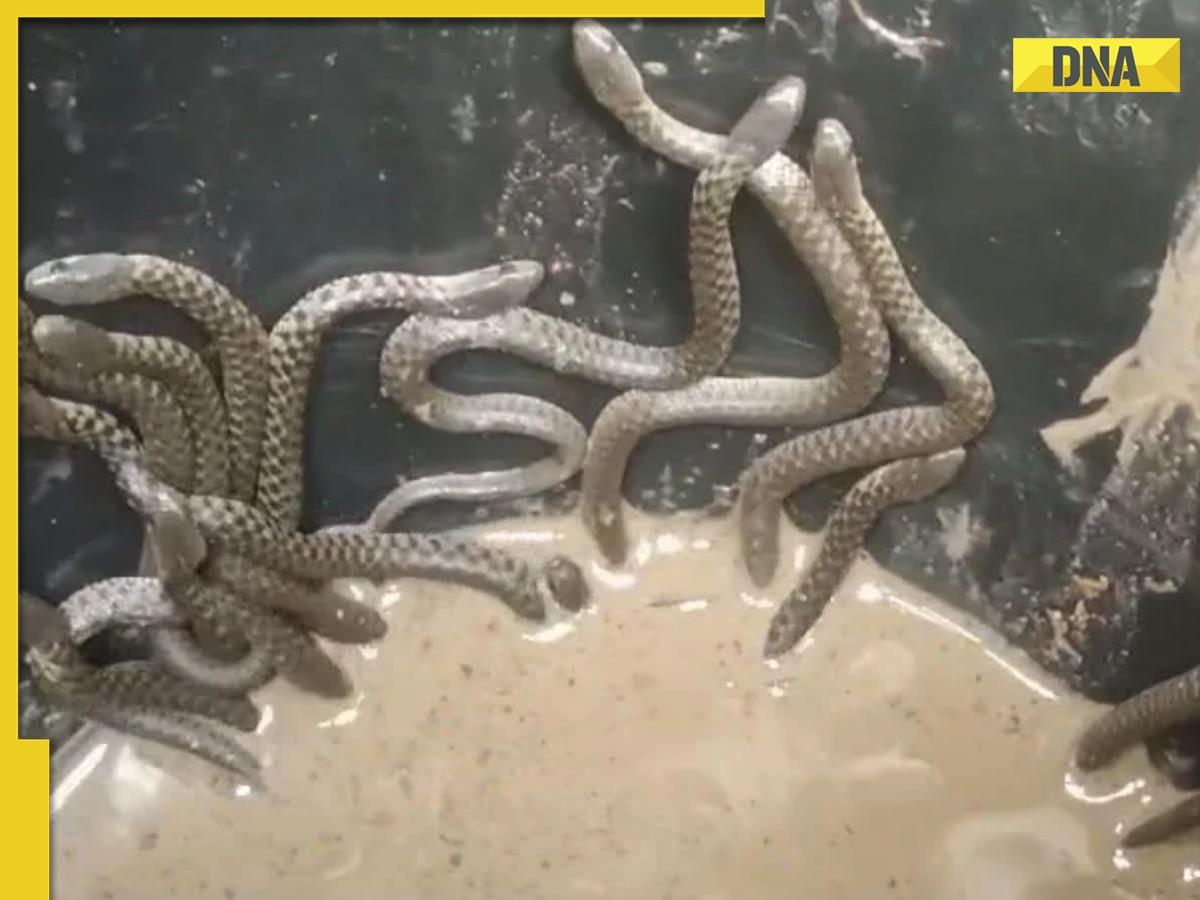
In what could be mistaken for a scene straight out of a horror movie, a resident in Assam’s Nagaon district had a terrifying encounter that would send shivers down anyone’s spine. Upon entering their bathroom in the Kaliabor area, the homeowner discovered over 35 snakes slithering within the confines of their home. This chilling sight has since captured the internet’s attention.
A viral video, shared by news agency ANI, documents this spine-chilling discovery. The footage shows a swarm of snakes emerging from underneath a large rock. The unsettling scene features the resident who bravely collected the serpents into a bucket, attempting to manage the unexpected intruders. The alarming video quickly gained traction on social media, with viewers expressing a mixture of terror and fascination.
“Not a good place to build a toilet; snakes might return,” one user commented, while another expressed sheer terror, stating, “I’d be terrified if I found a snake in my home.” The video amassed over 9.3 million views in a short span, making it a trending topic on various social media platforms.
The hero of this unsettling narrative is Sanjib Deka, an individual renowned for his affection towards animals. Speaking to ANI, Deka explained the sequence of events that led to the snake rescue. “The homeowner alerted me about the presence of snakes, prompting my immediate intervention. Upon arrival, I was astounded to witness numerous snakes crawling around, totaling approximately 35. These snakes were emerging from a recently constructed toilet in the house. Eventually, I released them in the Joisagar Dalani area,” he said.
Deka’s intervention brought relief to the distressed homeowner and intrigued onlookers. Known for his prior engagements with wildlife, Deka is no stranger to handling daunting situations involving animals.
. This recent encounter is reminiscent of an earlier incident when he rescued a colossal 14-foot-long Burmese python, weighing over 55 kg, from a tea estate in Kaliabo. His actions, both past and present, have earned him admiration and respect among the local community and beyond.
The frequency of such encounters in Assam raises questions about the relationship between human habitation and wildlife. The state of Assam, with its lush green landscapes and tea plantations, is home to a variety of snake species. This proximity to nature occasionally leads to such alarming incidents, highlighting the delicate balance that must be maintained between human activities and wildlife conservation.
In instances like these, prompt and professional intervention is crucial. Sanjib Deka’s timely action prevented what could have escalated into a more dangerous situation. Rescuing the snakes and relocating them to a safer environment underscores the importance of humane wildlife management practices. His example serves as a reminder of the need for awareness and preparedness in dealing with wildlife.
For many, the mere thought of encountering a snake is enough to evoke fear and anxiety. The homeowner’s experience not only highlights individual bravery but also emphasizes the significance of community support in managing wildlife encounters. The rapid response, aided by modern technology and social media dissemination, ensured that the situation was handled efficiently and the snakes were safely relocated.
Sanjib Deka’s involvement in this incident is a testament to the dedication and courage required in wildlife rescue operations. His actions provide insight into the challenges and rewards of working in this field. Furthermore, the viral video serves as an educational tool, bringing attention to the coexistence of humans and wildlife, and the occasional conflicts that arise.
As the video continues to circulate, it serves as a stark reminder of the unexpected surprises that nature can present. While it’s a story rooted in fear, it also sheds light on the vital role played by individuals like Sanjib Deka in ensuring the safety and well-being of both humans and animals. It’s a narrative that underscores the need for vigilance, respect for wildlife, and the importance of timely intervention in the face of such chilling discoveries.












